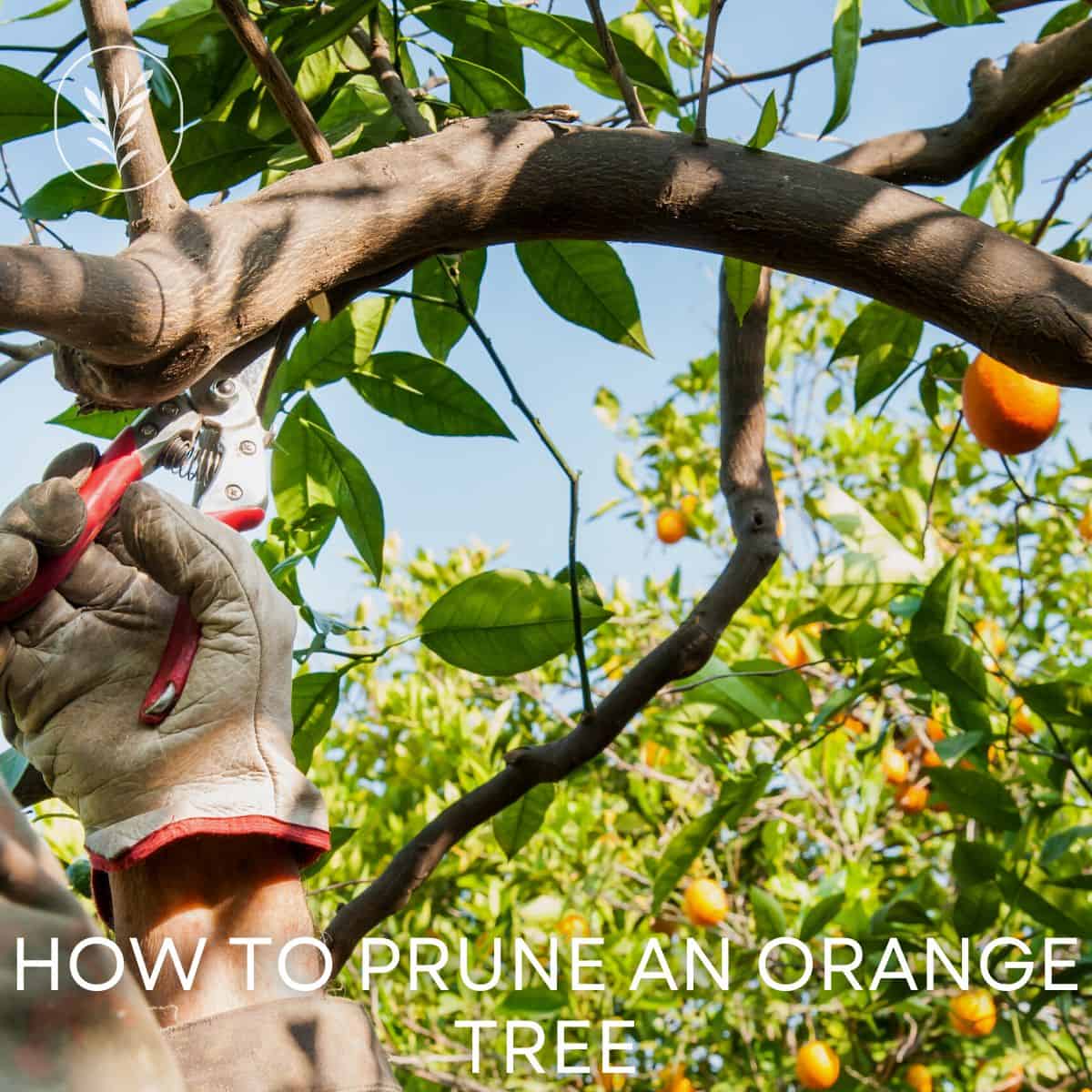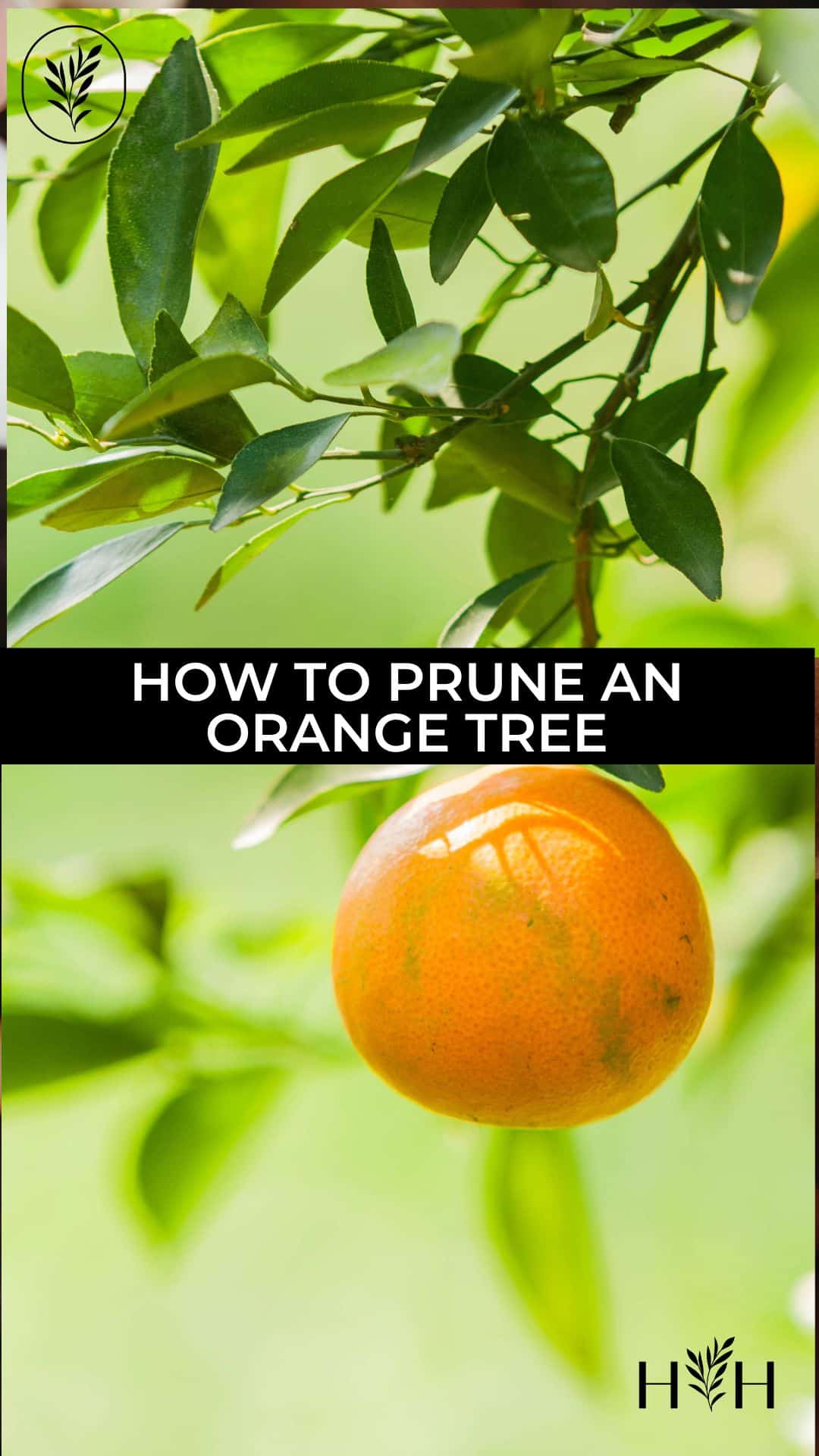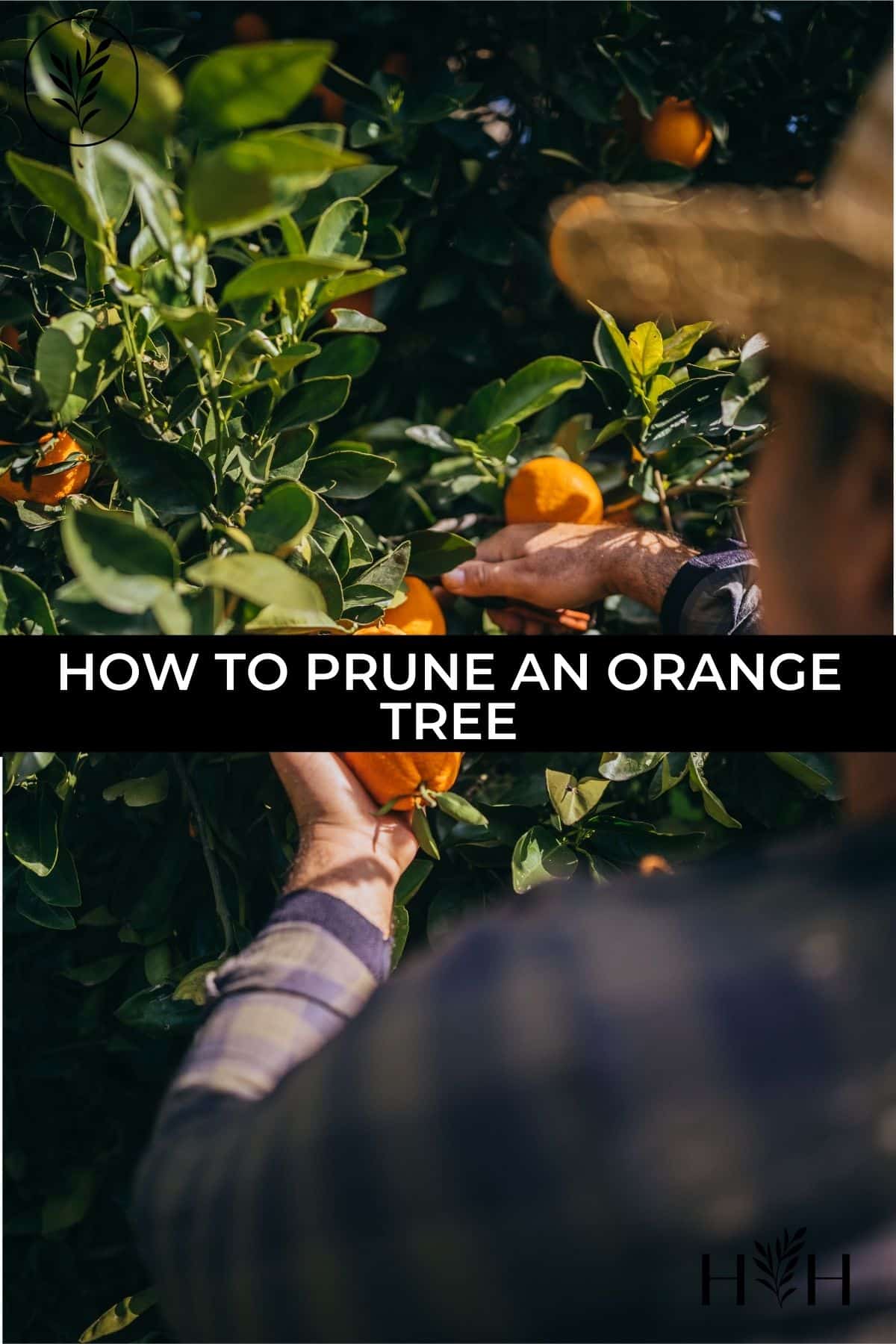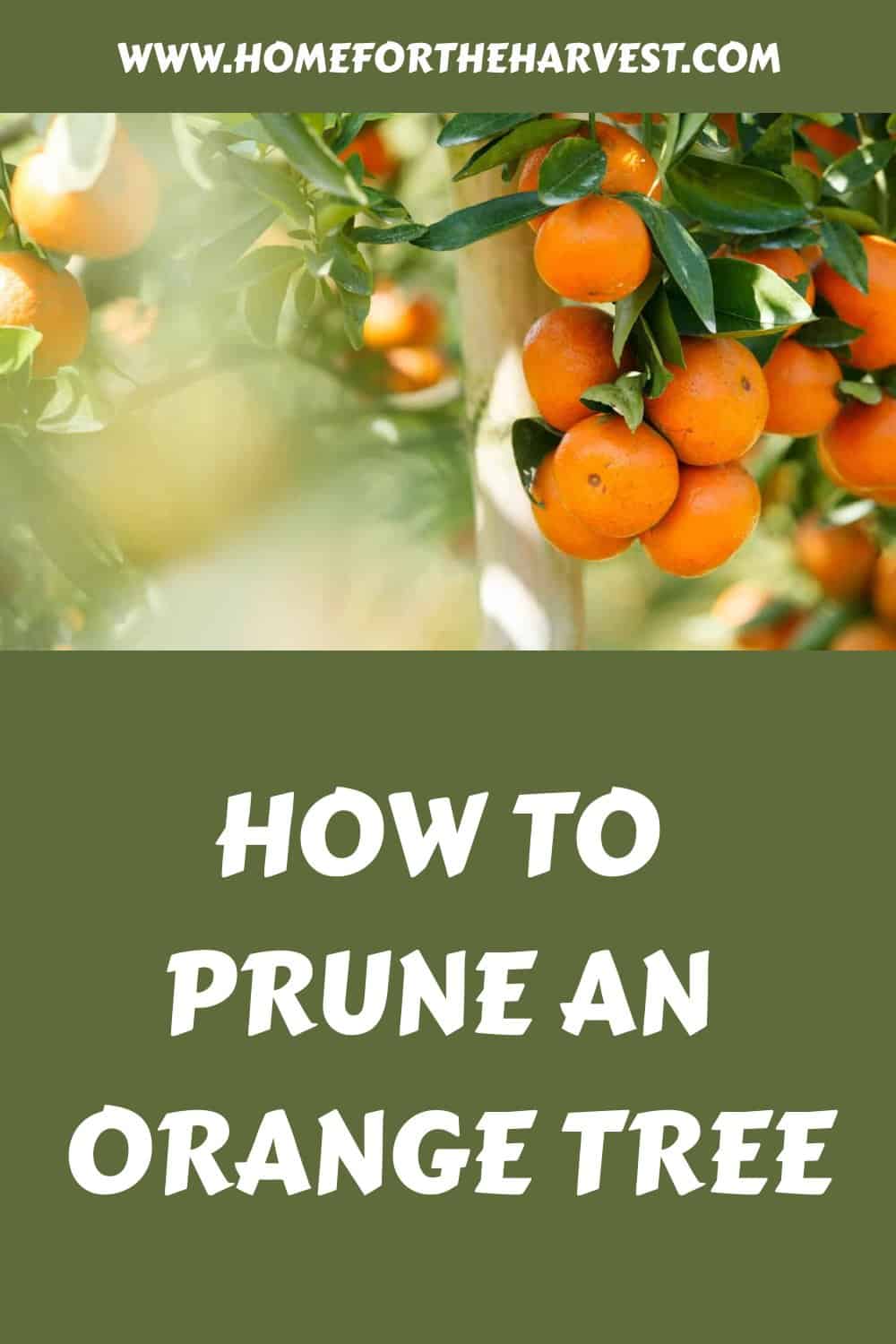Wondering how to prune an orange tree? Many gardeners (myself included) dread the task of pruning. Unless I’m removing a branch to propagate it, I don’t really look forward to this chore. However, when growing fruit trees, it is one of the most important chores you can tackle.
Orange trees should be pruned in early spring once the weather has warmed slightly. You’ll need sharp shears and loppers or a pruning saw to get it right. Trim out any crossing branches, those growing in the wrong direction, areas of disease or damage, and lower branches before shaping the entire tree to complete the task.
Read on to learn all about how to prune orange trees!
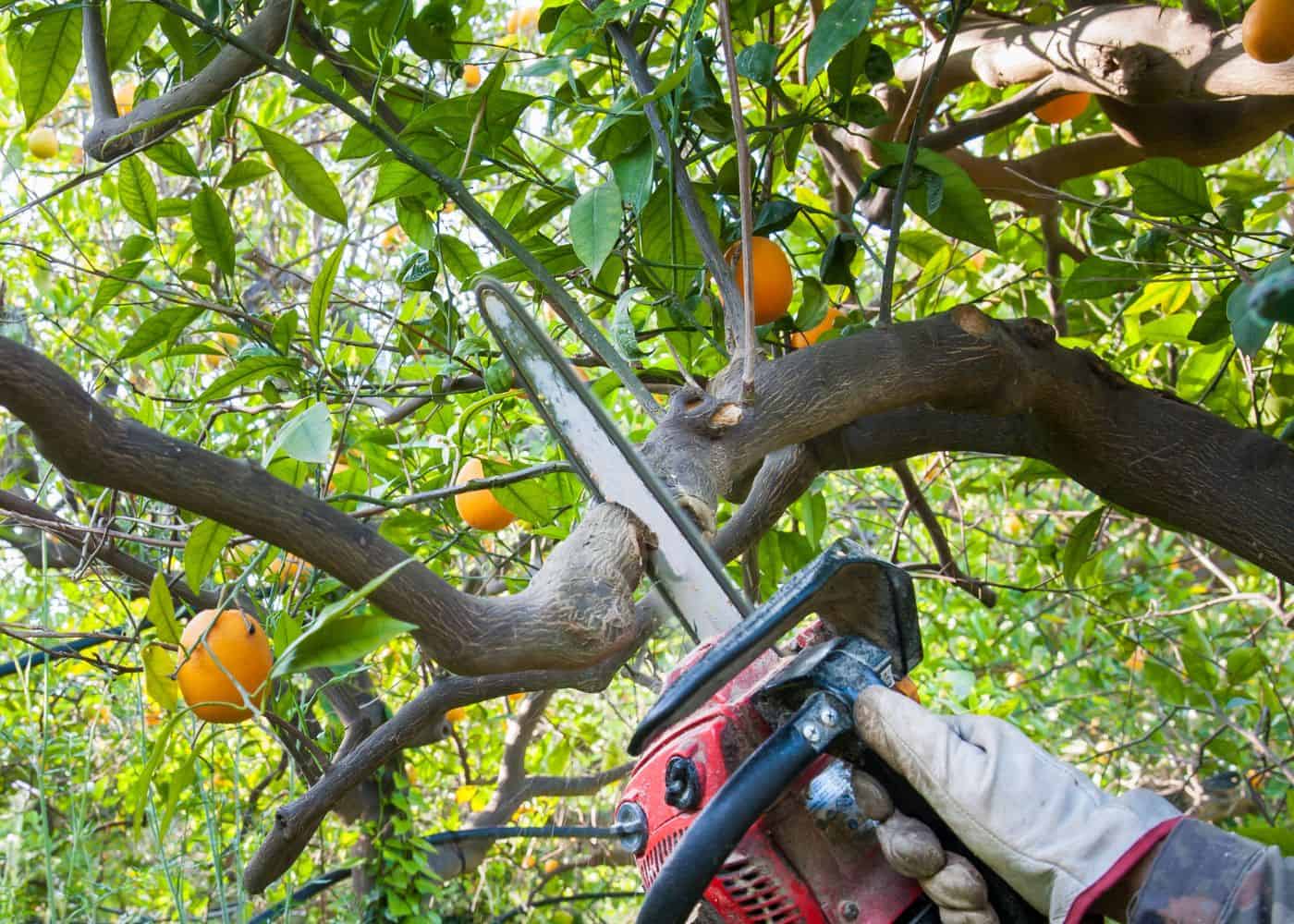
The benefits of pruning orange trees
Pruning regularly and correctly is vital to ensuring a strong harvest. Trimming the right branches encourages not only new and healthy growth but also directs the energy of the plant where you want it – the fruits.
If your tree is damaged or diseased, pruning can also help stop the spread of the problem, saving the tree from further damage. The shape is also important, as orange trees are known for becoming unruly without the correct trim.
It may seem like a tedious task to complete. However, it only comes around once a year and can drastically improve your harvest. Put your earphones in, listen to a podcast and treat it as a chance to have a peaceful afternoon with your favorite plants.
Citrus are evergreen trees, thus generally require less pruning than deciduous trees. However, they do need to be pruned regularly for optimal fruit quality and productivity.
Pruning citrus, University of California
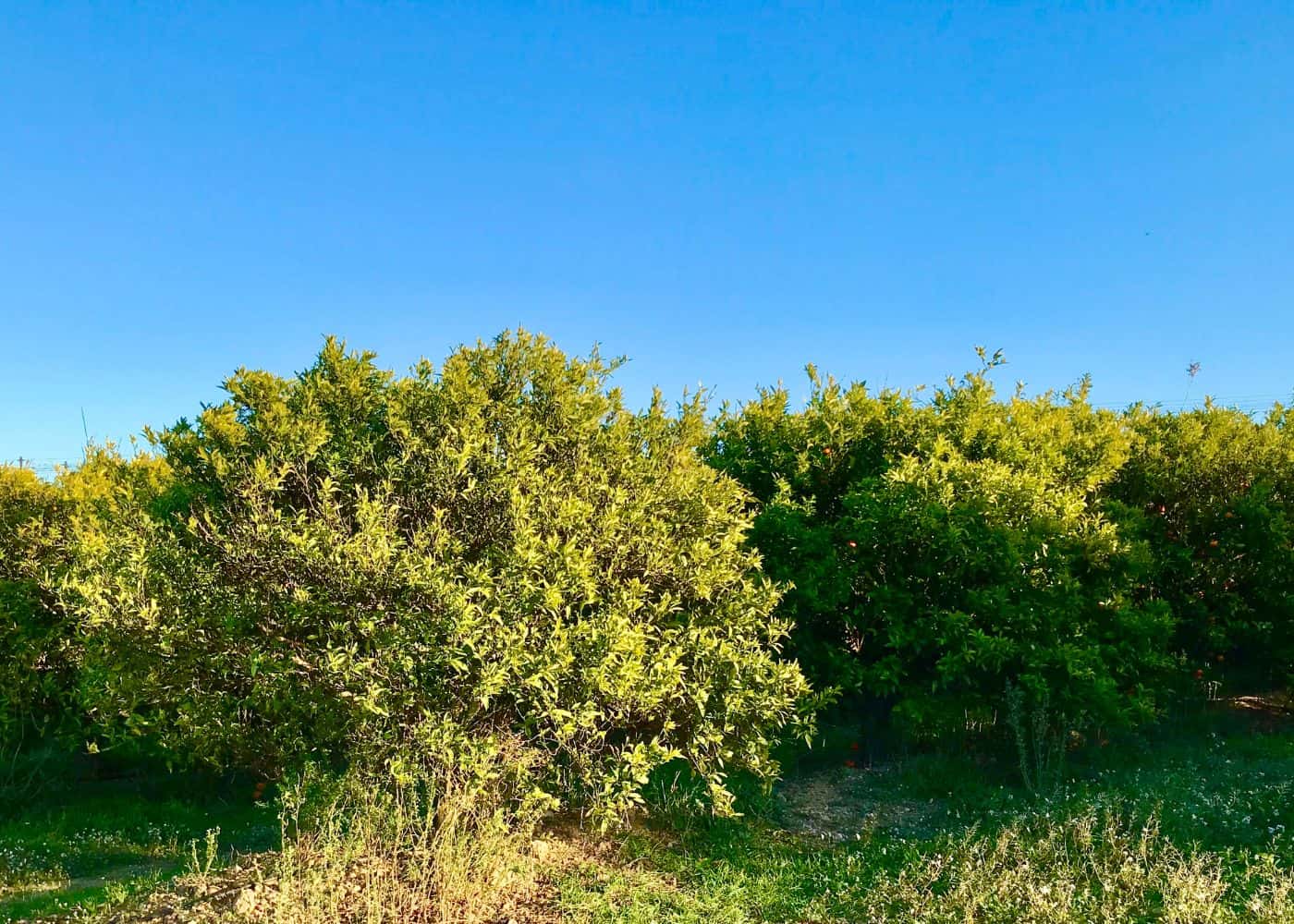
When to prune an orange tree?
While pruning correctly is essential, pruning time is also important. If you prune too early, you may expose the trimmed and, therefore, vulnerable growth to extreme cold. Pruning too late is also not good, as you may remove early buds that limit the amount of fruit on the tree overall.
Oranges trees need to be pruned in early spring before blooms develop, but after all chance of frost has passed. This is typically between February and March (for those in the northern hemisphere) and no later than April.
If you live in a warmer climate, aim for late winter or the first weeks of spring to get your pruning done. Those in colder climates should wait a couple of weeks to prevent any risk of cold damage.
What you’ll need to prune an orange tree?
Having the right tools sets you up for success in the pruning process. The exact tools needed will depend on the age of the tree and what branches you need to trim. You will need at least one, likely more, of the following trimmers:
- Pruning shears
- Pruning saw
- Lopper
No matter which tools you use, make sure they are sharp and clean. The better the cut, the quicker your tree will be able to heal. Garden tools can also carry diseases between plants if not cleaned frequently.
Those with sensitive skin should also consider using a pair of gloves, especially when pruning older trees. However, for young shoots that only need a quick trim, gloves usually aren’t necessary.

How to prune an orange tree step-by-step?
Here’s a step-by-step tutorial for pruning orange trees:
Step 1: Remove lower branches
The first step is especially important for young trees – removing lower branches. As these branches do not typically produce fruit, they will sap water, nutrients, and energy from the tree without contributing much in return.
As they are lower down, these branches are also the first to receive any moisture and nutrients from the soil, leaving less for the fruiting branches above.
Remove any lower branches below the graft point cleanly. You can also remove a few other branches to lift the tree if needed.
Step 2: Remove crossing branches
Dense areas of growth create the perfect environment for the development of diseases. The lack of airflow between leaves and branches allows any potential threats to settle and spread from there.
To improve airflow and the growth of each branch, remove one branch in a crossing pair, saving the one growing horizontally. This also allows more sunlight to reach the lower branches, improving growth and yield.
Step 3: Remove branches spreading in the wrong direction
Horizontal branches are the goal for your fruiting trees. Branches growing directly upwards or downwards that aren’t the main trunk do not perform well and only sap energy, much like lower branches below the graft point.
Trim any that appear without removing more than one-third of the tree at a time.
Step 4: Remove diseased and damaged branches
Possibly the most important part of pruning for any plant is removing damage and disease. Damaged branches draw energy from the plant in an attempt to heal and are more vulnerable to attack from pests and diseases. Remove them back to healthy growth.
Pruning diseased branches stop the spread of the problem around the tree and to other plants in your garden. However, removing too much of the tree at once can lead to shock, so this should only be done in the early stages of infection. If the problem has taken over, you’ll need to apply relevant treatment rather than pruning all affected branches.
Step 5: Shape the tree
Once you’ve made the necessary cuts, take a step back and look at the overall shape of the tree. Now is the time to remove unruly branches that are making the tree appear lopsided.
It doesn’t have to be perfect – less is more here – but it will make the tree look much tidier than it would otherwise.
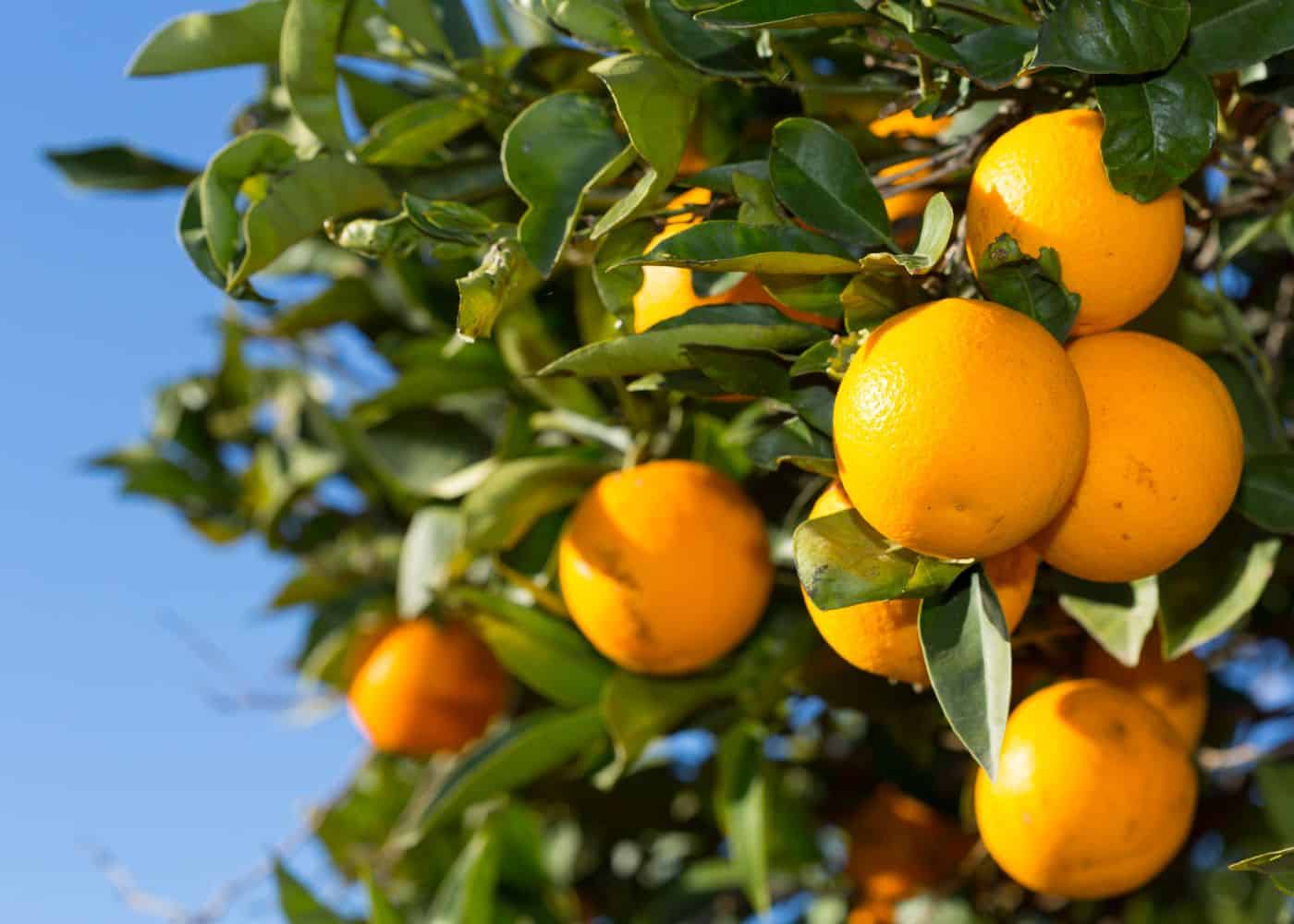
“Mature citrus trees do not require training and pruning for production like other fruit trees. Prune lightly to shape the tree or to remove dead or damaged limbs. Excessive pruning usually results in reduced fruit production, vertical shoots called water sprouts, and/or suckers. These sprouts and suckers should be removed to make room for more productive limbs.”
Citrus care basics, University of Florida
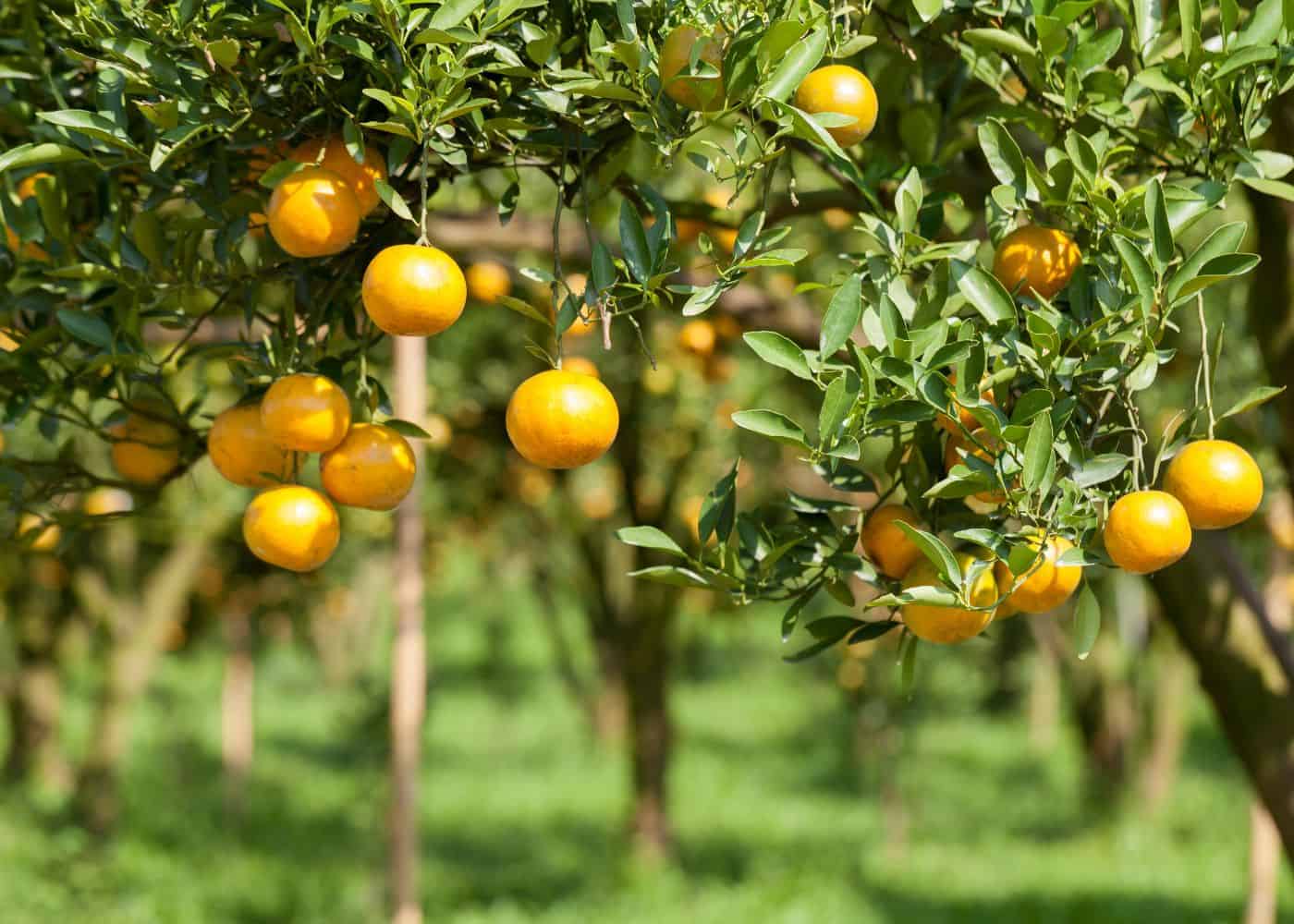
FAQs
Do orange trees need pruning?
Orange trees don’t strictly need to be pruned, as they grow just fine on their own in their native environment. They also tend to grow very vigorously after pruning, as the plants are naturally bushy.
That said, pruning them can help the overall health of the tree by removing dead and diseased branches, as well as by improving air circulation. Pruning can also increase productivity on older trees that are no longer producing well and can also be used to train young trees into interesting shapes like a hedge or espaliered fruit trees.
How far back can you prune a citrus tree?
Citrus trees can be pruned back by about 1/3 of the length of the branches. Beware that citrus trees tend to grow back with a vengeance after pruning, so only prune enough to keep its size down and/or to let a bit of light into the canopy.
Mature trees tend to develop old, unproductive wood at the bottom of the canopy that doesn’t produce much fruit and gets in the way of higher productive branches. These branches can be completely removed back to about 1″ away from the trunk.
If the entire mature tree is unproductive, you can cut back a citrus quite hard by sawing all the main branches back to 1-2 feet long. Remove twiggy bits from the remainder, paint the tree’s bark with diluted white interior latex paint, and thin the vigorous branches that emerge.
Can you shape an orange tree?
Orange trees can certainly be shaped, and tend to keep a slightly more tidy habit than lemon trees. You can leave the tree to do its own thing or shape it into a standard form tree or even an espalier.
How do I keep my orange tree small?
To keep an orange tree small, plant it in a container and prune it regularly. Small orange trees in pots sometimes only bear fruit every other year due to the decreased size of the canopy.
References
- Pruning citrus, University of Arizona
- Citrus care basics, University of Florida
- Pruning citrus, University of California



